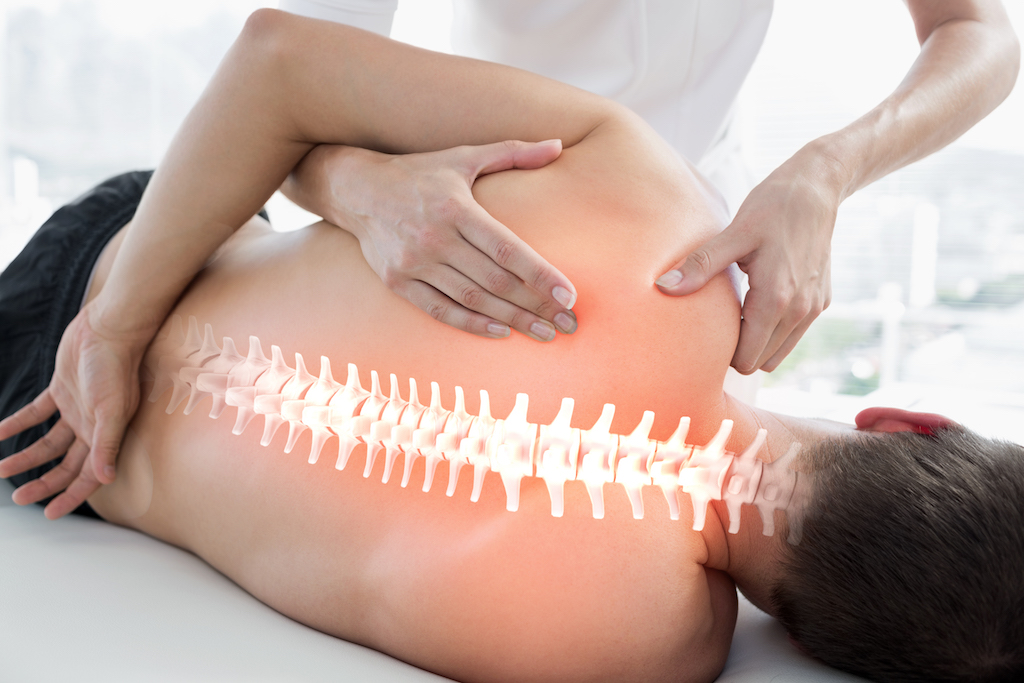Osteopaths look at the whole body- muscles, joints, nerves, circulation. The philosophy behind Osteopathy is that when the body is in balance the body is continually healing itself. When pulled out of balance by various stressors, injury or disease may manifest. The Osteopath assists the body into a balanced state where healing can once again be optimised.
What is Osteopathy?
Osteopathy is a form of manual physical therapy used to treat a variety of musculoskeletal ailments. Osteopathic therapy is a form of manual therapy used to treat the whole body. It takes a holistic approach considering all aspects of the patient- mind, body, emotional and spiritual health. Osteopathy has its roots in medicine having been developed by a medical doctor Dr Andrew Taylor Still in 1874. Over the years it has been considered as a complementary alternative medicine (CAM) but in the past 20 years has been viewed as an effective conventional therapy with traditional and scientific philosophy.
What do Osteopaths do?
Each patient is assessed individually and appropriate treatment customised according to their specific needs.
We go through a thorough history about what you're coming in for, background medical history (as it may all be linked), do a thorough examination which may include orthopedic testing if there is an injury to a joint and then we treat.
A range of techniques is used such as soft tissue massage, joint manipulation, articulation, stretching, Muscle Energy Technique (MET), cupping, dry needling and prescriptive pilates exercises and stretches.
We select the treatment based on what your body best responds to.
There are four main Osteopathic principles:
- The body is a unit – mind, body, and spirit.
- The body has an innate self-healing capacity
- Structure and function are inter-related
- Treatment is based on the body’s self-healing mechanism and structure and function.
There are many techniques an osteopath may use during treatment, you will find that each therapist treats differently according to their own personal style.
What are the osteopathic manipulative techniques?
Osteopathic treatment may include:
- Soft tissue massage
- Fascial release
- Muscle Energy Technique (MET)
- Stretching
- Joint articulation and mobilisation
- Joint manipulation where you will hear a release in the joint
- Intra-oral jaw release
- Gentle balancing
In addition to these other techniques such as cupping, pilates rehabilitation, and prescriptive exercises are integrated into treatment.
What is Structural vs. Cranial Osteopathy?
Every Osteopath will have a different approach to treating. The two distinct styles you will often hear about are Structural and Cranial Osteopathy. But what's the difference?
A structural treatment has techniques that are more direct such as articulation, manipulation, and soft tissue. You tend to feel like you've been treated. Cranial osteopathy uses very gentle and subtle movements to encourage an alteration in the tissue tensions either at the head or throughout the body. These techniques are commonly referred to as indirect techniques. Lots of people know about cranial work for babies, to help them adjust after birth. It's suitable for adults too and especially concussion injuries.
Although cranial osteopathy is very effective for some conditions we tend to approach your issues with a more structural approach and integrate cranial work if needed. If you love to feel ‘worked on' then you'll respond well to a structural approach.
If you are specifically after Cranial Osteopathy please get in contact for practitioner recommendations.
What Do Osteopaths Treat?
Osteopathy is often misinterpreted as a treatment for the bones (osteo) its name is misleading as it can be applied to a range of conditions and injury. Here is a list of some reasons you may want to see an osteopath:
- Acute and chronic pain
- Grinding of the teeth- bruxism
- Back pain (upper and lower)
- Pregnancy-related discomfort– heartburn, sacroiliac instability, and pain or general wellness
- Disc injury- bulged or herniated
- Joint pain- shoulder, hip, knee, ankle
- Sprained joints
- Muscle tears
- Tendonitis
- Pre and post-operative treatment (as early as 2 days after)
- Headaches and migraine
- Neck pain
- Jaw pain
- Ear pain
- Rotator cuff injury or tear
- Frozen shoulder
- Shoulder impingement syndrome
- Tennis/golfer’s elbow
- Achilles tendonitis
- Plantar faciitis
- Fibromyalgia
- Poor sleep
- Period pain
- Muscle weakness
- Biomechanical imbalance
- Rehabilitation
Lots of people tend to come to see us initially for neck or back pain not realising that we can treat other areas of the body.
We also love complex symptoms, ones that noone else can work out! Nothing is too quirky or weird for us!
You Don't Have to be in Pain to see an Osteo
Many people will present to a therapist once they have a problem, often the problem is there well before you actually notice any signs of symptoms. An osteopath is able to pick up on possible strains and treat them before they become an issue. You may feel fine now, but patients often report how much better they feel after a treatment.
Every person is different, there is no set treatment protocol for a condition. Treatment is an art taking an integrative approach using a variety of techniques to help you reach your full health potential.
Osteopaths undergo 5 years of university training including a post-graduate Masters. They are trained to diagnose musculoskeletal injuries. If further investigation is required your Osteopath will recognise this and is able to refer for X-rays, ultrasounds and further specialist care via your GP.
Osteopaths in New Zealand are registered health practitioners with Osteopathic Council New Zealand (OCNZ) and ACC accredited providers.

